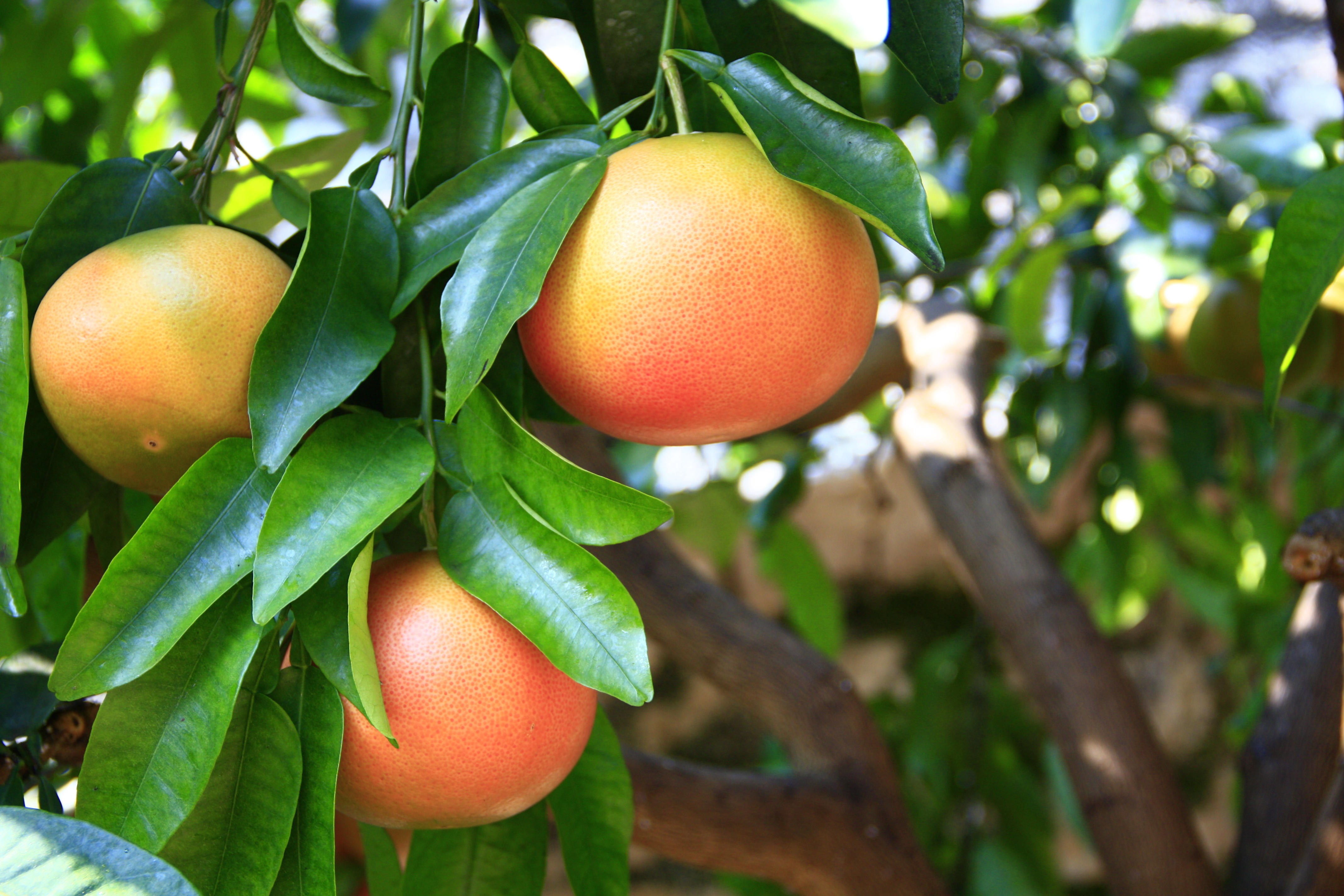Citrus x paradisi

Common: Grapefruit
Family: Rutaceae
Origin: Grapefruit apparently originated as a natural mutation of the shaddock or pummelo somewhere in the West Indies. It was first described in 1750 in Barbados, while the first record of the term grapefruit occurred in 1814 in Jamaica. Credit for its introduction to the United States in accorded to Count Odette Phillipe, a Spanish don, who planted it in Pinellas County, FL, about 1823. That grapefruit originated as mutation from pummelo seems more likely when one considers the number of grapefruit varieties today, most of which originated as mutations from existing grapefruit varieties.
Zones: 8, 9, 12-24 and indoors
Light: Full sun
Temperature: Grapefruit achieves its best quality under conditions of hot days and warm to hot nights, which results in higher sugars and lower acids than grapefruit produced in the cooler night temperatures common in Arizona and California. It grows well in both tropical and subtropical climates of the world, but it is a little less cold hardy than oranges.
Soil: Will grow in almost any soil as long as it is well-drained.
Water: Need moist soil but not standing water. Salinity of the soil and in irrigation water retards water uptake by the root system and reduces yields. Large light yellow fruit. Ripens 18 months after bloom - late November to June in desert areas. Needs highest, most prolonged summer heat for top quality fruit, but even out of the best climate it's a beautiful tree. Standard tree grows to 30 feet or more. Large glossy leaves. The grapefruit tree has a rounded top of spreading branches; the trunk may exceed 6 inches in diameter; that of a very old tree actually attained nearly 8 ft in circumference. The twigs normally bear short, supple thorns. Humidity contributes to thinness of peel, while in arid climates the peel is thicker and rougher and, as might be expected, the juice content is lower. Low winter temperatures also result in thicker peel the following year and even affect the fruit shape.
At first, the tree was grown only as a novelty in Florida and the fruit was little utilized. Even in Jamaica, the trees were often cut down. By 1910, grapefruit had become an important commercial crop in the Rio Grande Valley and, to a lesser extent, in Arizona and desert valleys of California. By 1940, the United States was exporting close to 11,000,000 cases of grape-fruit juice and nearly one-half million cases of canned sections. Source of many useful oils and constituents for culinary, cosmetic and medicinal purposes. High like most citrus trees in Vitamin C, limonene, esters and geraniol as well as other coumatins and furocoumarins. Used as antiseptic, antioxidant, astringent, anti-bacterial, diuretic and stimulant for peristalsis, lymph nodes, a stimulant and general tonic.